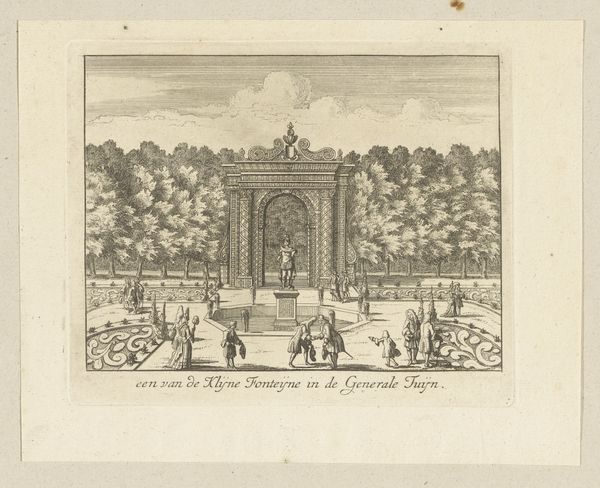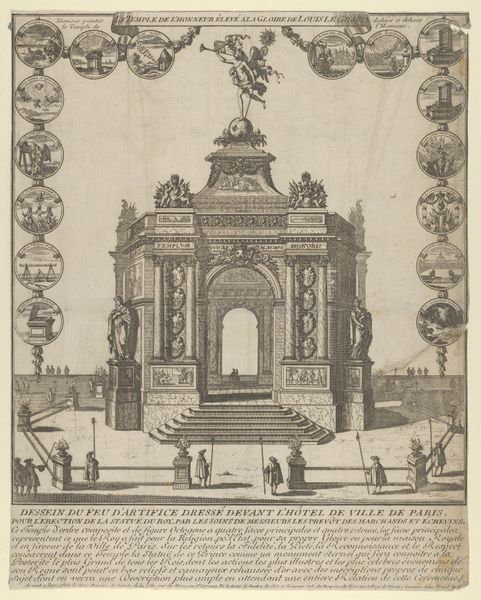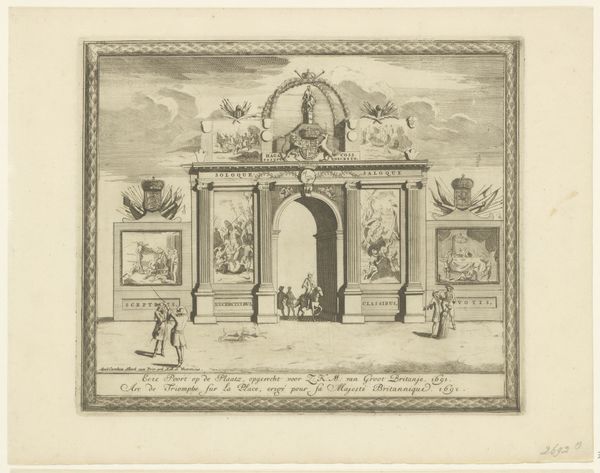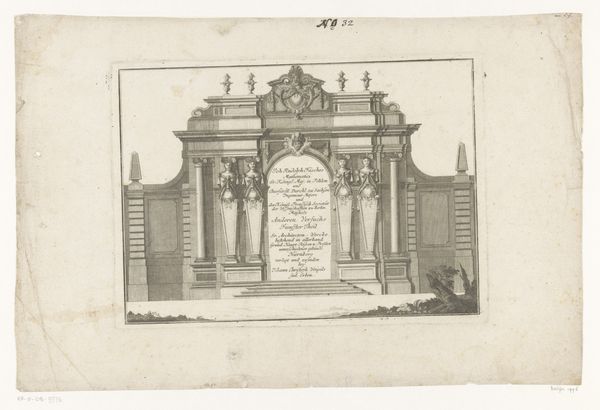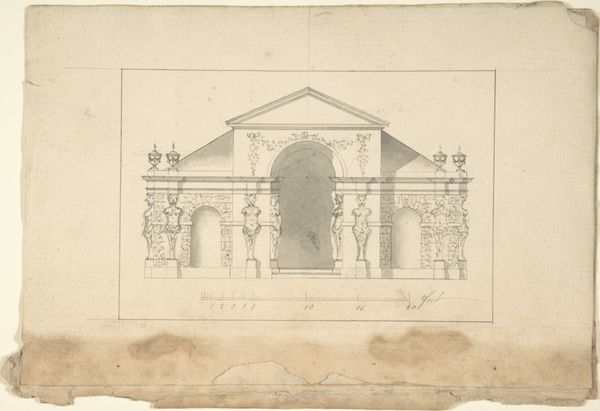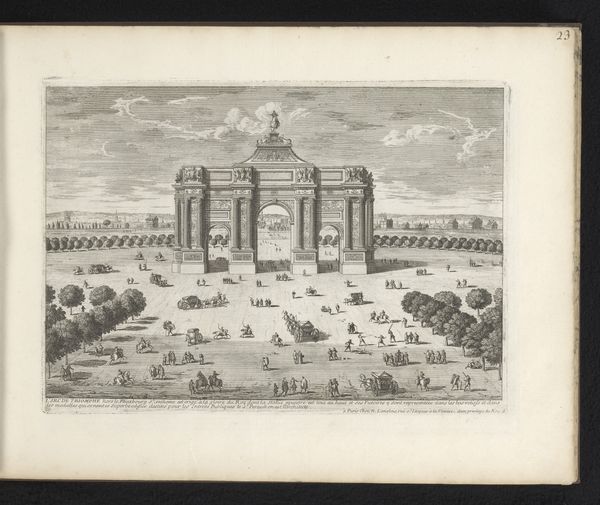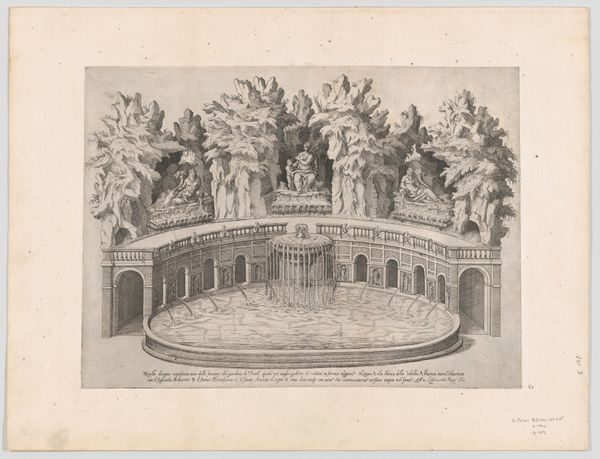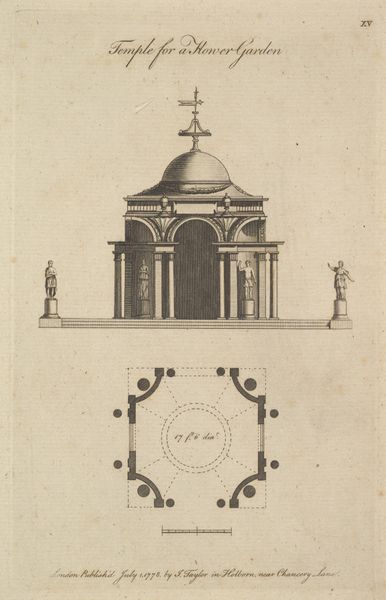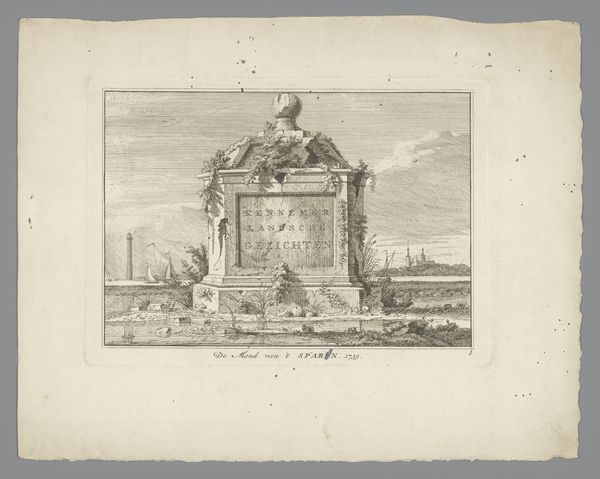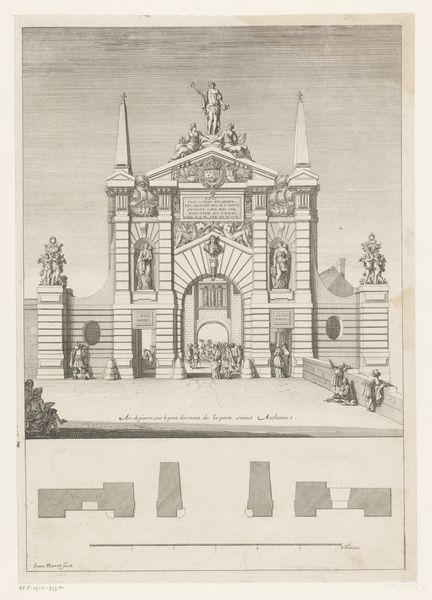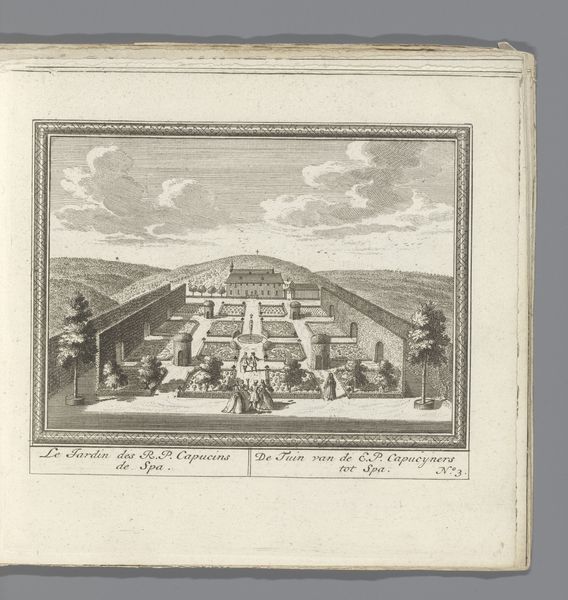
drawing, paper, ink, engraving, architecture
#
drawing
#
baroque
#
landscape
#
paper
#
form
#
ink
#
geometric
#
line
#
engraving
#
architecture
Dimensions: height 225 mm, width 319 mm
Copyright: Rijks Museum: Open Domain
Here is the architectural design on paper, made by Johann Georg Ringlin in the 18th century. It presents garden architecture, dominated by classical motifs like columns and symmetrical designs. These elements are more than mere decoration. Columns, for instance, evoke the grand temples of antiquity, representing ideals of order, reason, and the sublime. Symmetry, a design principle favored since ancient times, appears here too, reflecting a human desire for balance and harmony. Even the trees planted in symmetrical rows speak to this. Consider how these motifs have evolved. Columns, originally supporting sacred structures in Greece, reemerged in the Renaissance as symbols of reborn classical values. This cultural memory, passed down through generations, shapes our interpretation. These forms elicit emotional responses tied to collective experiences. This pavilion is not just a structure, but an echo of cultural aspirations, engaging our subconscious with its powerful symbolism. Thus, architecture, in its cyclical progression, continually reinvents itself, resonating across time with renewed meanings.
Comments
No comments
Be the first to comment and join the conversation on the ultimate creative platform.
